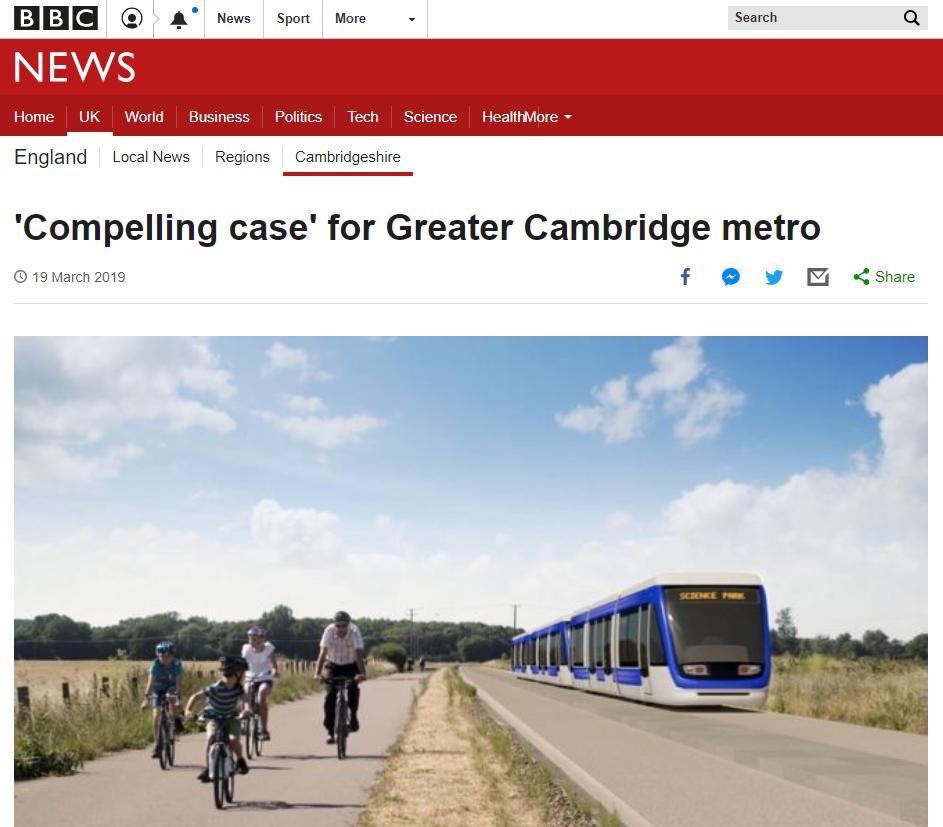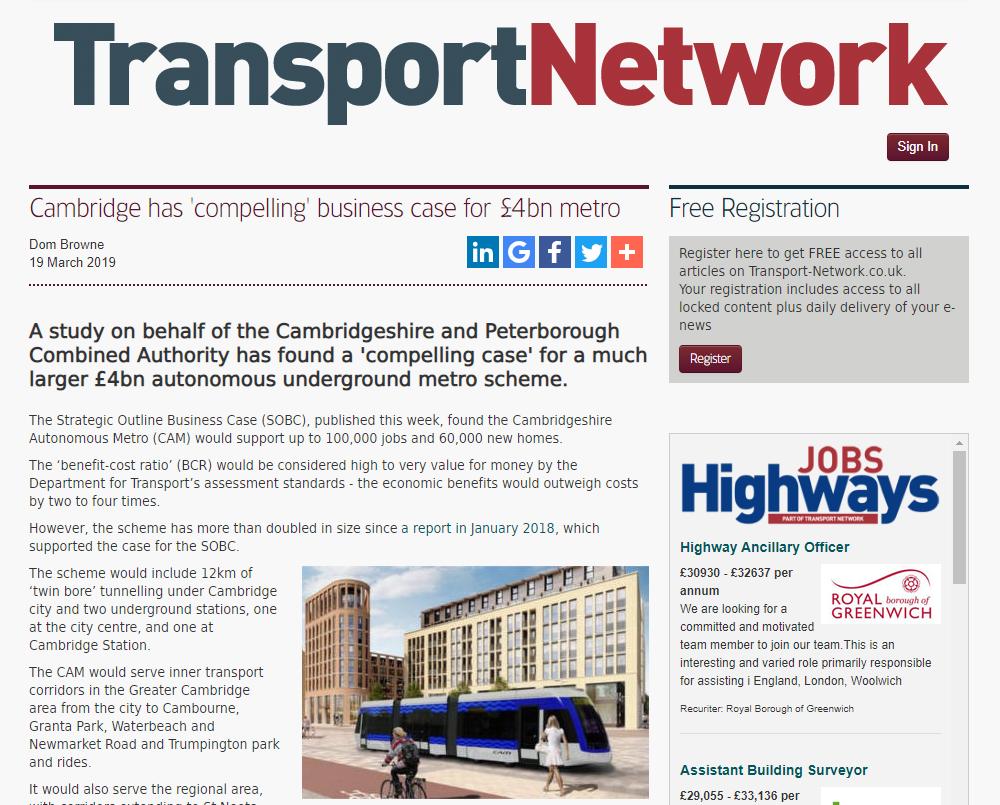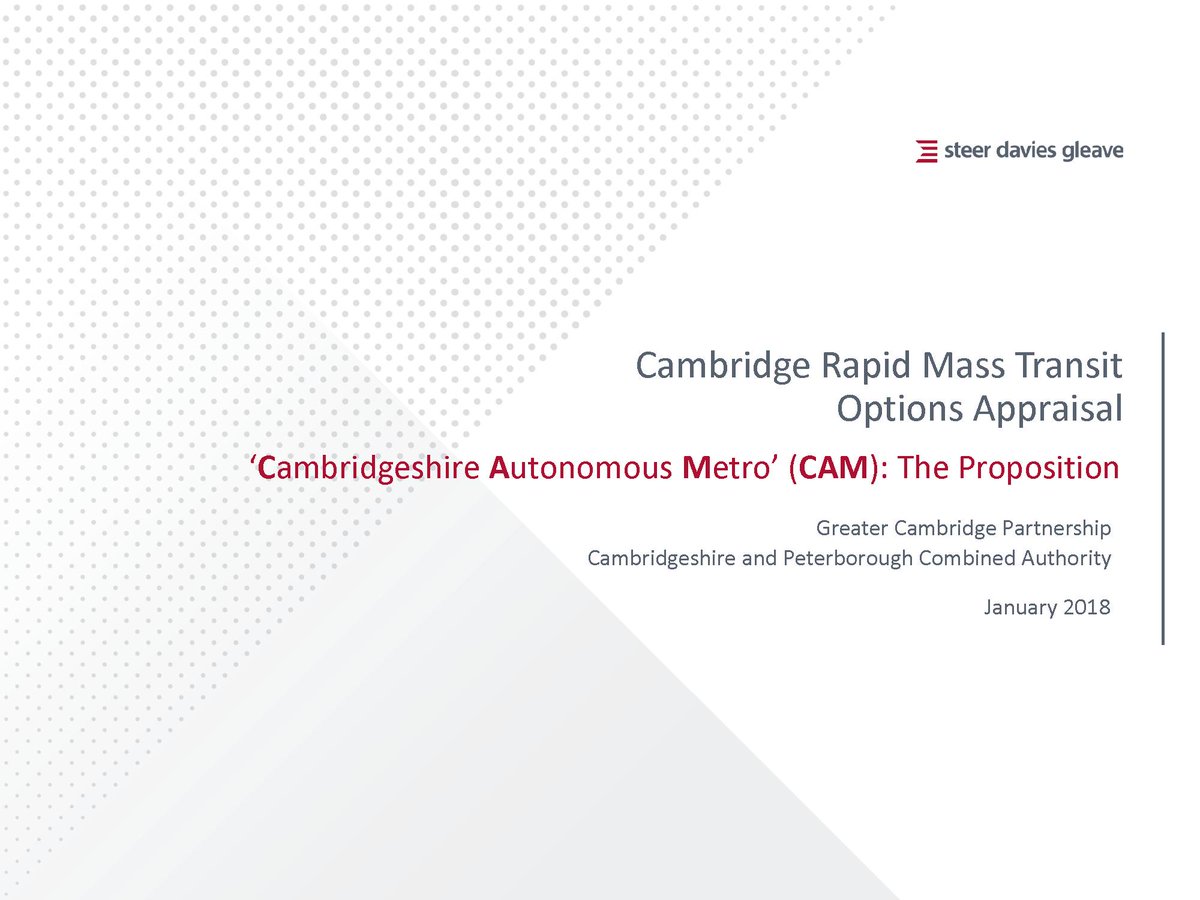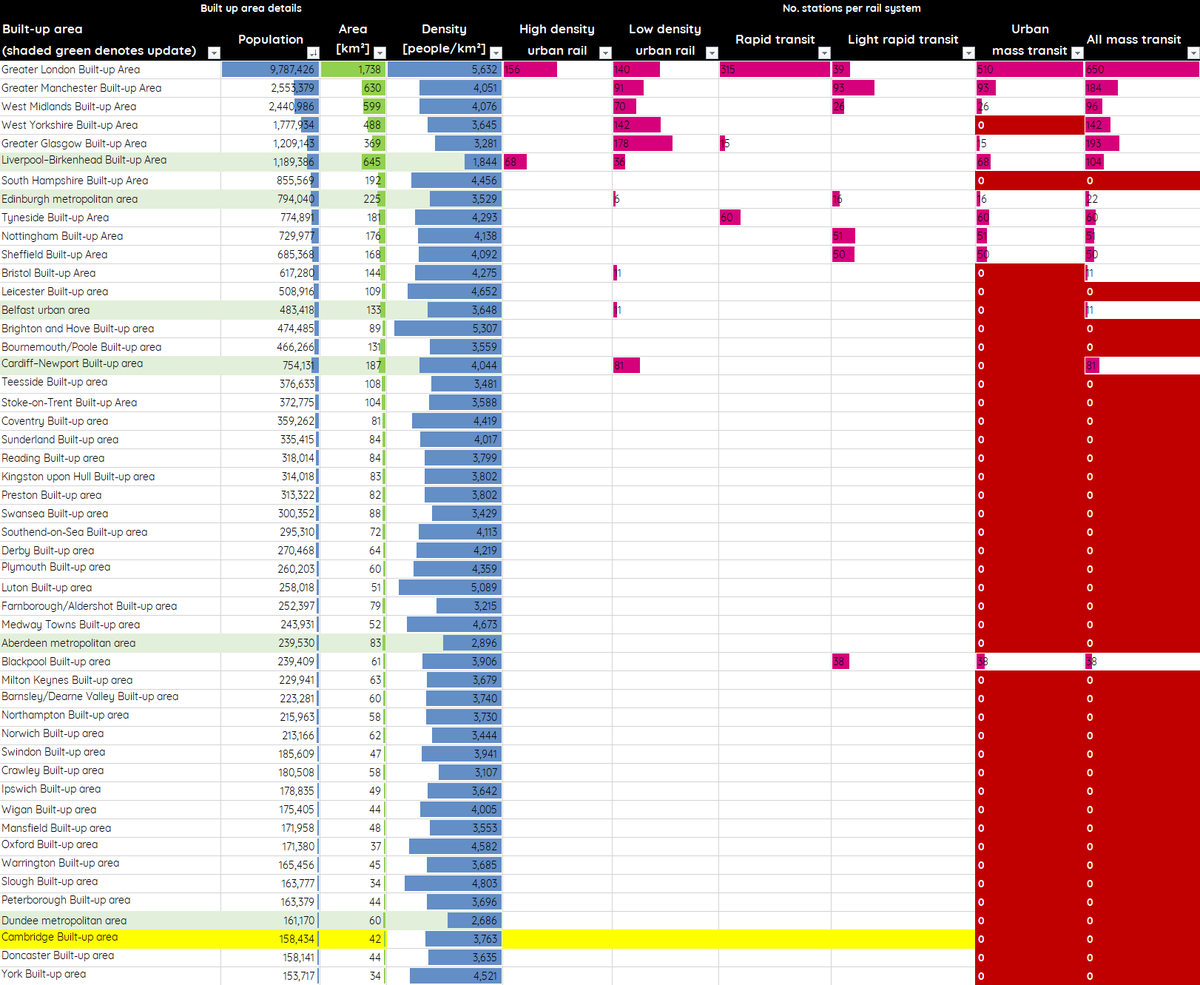



Time for a #TestingTransport thread.

The options appraisal process that selected CAM (apparently a @Steer_Group proposal in the first place) was also undertaken by… erm… @Steer_Group back in January 2018.


In their options appraisal, the capex for the completed CAM system was £1.7bn. In the business case report the capex has climbed to £4.5bn, which is as much as the LRT regional network 💰


To make comparisons between CAM and an LRT system, we have to assume the vehicles they’d use.
It’s basically an expensive bus.

It follows a fairly common design and is easily capable of dealing with narrow/steep streets.

On the core section, CAM gives a capacity of 5580p/h/d.
An LRT system with the same service pattern would give 9000p/h/d, but that alone isn’t a reason to dismiss the CAM.
core: 4.8EMGTPA
branches: 1.6EMGTPA
For comparison, the peak annual tonnages for HS2 will be around 60EMGTPA.
To put it another way, if annual tonnages are at 2EMGTPA or above, then the whole life cost analysis generally favours steel wheels on steel rails.
Externally-powered LRT vehicles are also less complex and therefore cheaper to maintain than an internally-powered (by battery or otherwise) bus-tram.
Unless I've got the wrong end of the stick completely, it appears that the selection of the CAM option is therefore pretty shaky.
Disagree? Let me know why!
The priority for new mass transit systems should go to those underserved urban areas that are larger or where other investment is shortcoming.
The unit cost of €92m/km is far greater than that of @Crossrail, which is mad if you consider the specification of the two systems.

The Cambridgeshire AUTONOMOUS Metro.
❌ costs the same as LRT 💰
❌ offers fewer benefits 📊
❌ isn't actually autonomous 🤖
So that'll have to be a whopping great thumbs down from me 👎
*not all ko-fi pennies will be spent on coffee























